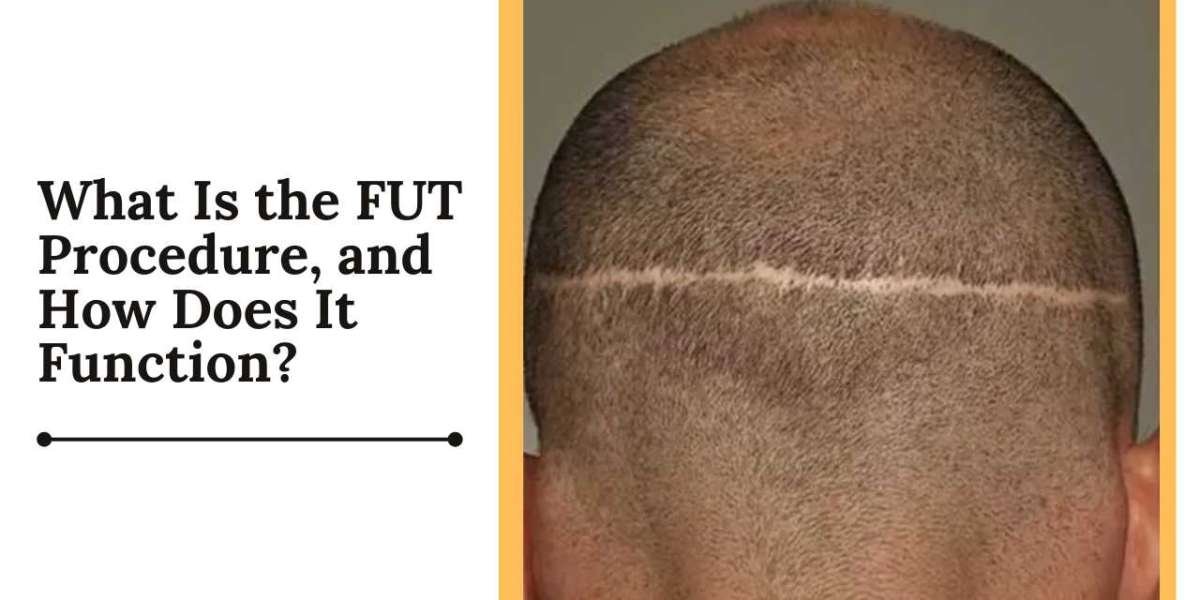Hair loss can greatly affect your appearance and self-confidence, often leading to frustration when finding the right solution. With so many treatment options available, it can be overwhelming to select the best one. One of the most influential and trusted methods for hair restoration is the (Follicular Unit Transplantation) FUT procedure. This process involves taking healthy hair follicles from a donor area on your scalp and transplanting them to areas with thinning or no hair. FUT provides natural-looking, long-lasting results, making it an excellent option for those desiring a permanent solution. In this article, we will walk you through how FUT works and why it is a trustworthy choice for those looking to restore their hair and regain confidence.
Understanding the FUT Procedure?
FUT (Follicular Unit Transplantation) is a popular hair restoration treatment that involves transferring healthy hair follicles from a donor area to areas of the scalp with thinning or no hair. It's particularly effective for individuals with hair loss due to genetics, aging, or medical conditions. During the procedure, the surgeon uses natural groupings of hair follicles, called follicular units, generally containing one to four hairs. These units are carefully harvested and transplanted to maintain the hair's natural growth pattern, providing long-lasting, natural-looking results.
How Does the FUT Procedure Work?
- Consultation and Planning
The FUT procedure starts with a detailed consultation, during which your hair restoration specialist evaluates your hair type, the level of hair loss, and your goals for the treatment. Based on your unusual hair loss pattern and the condition of your donor area (usually the back or sides of your scalp), the surgeon will determine if FUT is the right option for you.
This step is essential because the procedure's success relies on the quality of both the donor and recipient areas. The surgeon will also explain the entire process, including what results you can expect and any potential risks. - Harvesting the Donor Hair
Once you decide to proceed with the FUT procedure, the next step is removing the hair follicles. Unlike other hair restoration methods that take individual hair follicles, FUT involves cutting a thin strip of skin from the back of your head. This strip contains many healthy hair follicles that will later be divided into small units for transplantation.
The donor area is carefully chosen based on the thickness and quality of the hair. This area is usually selected because it is resistant to DHT (dihydrotestosterone), a hormone that causes hair loss. This means the hair from this area will continue to grow even after it is moved to the thinning or bald area on your scalp. - Preparing the Grafts
After the strip of skin is removed, it is carefully divided into small sections under a microscope. Each section, called a follicular unit, contains one to four hairs and preserves the natural growth pattern. This step requires precision to keep the hair follicles healthy.
The surgeon then adjusts the follicular units' angle and approach to ensure the transplanted hair grows naturally and matches your existing hairline. This meticulous process ensures the transplanted hair blends seamlessly with the remainder of your hair for a natural and fuller appearance. - Transplantation
The next step is transplanting the prepared hair grafts. The surgeon makes small incisions where the hair is thinning or balding. Each follicular unit is carefully placed into these incisions, considering factors like hair density, angle, and direction of growth.
The goal is to create a natural-looking hairline that blends seamlessly with your existing hair. Proper placement is crucial because poor positioning can lead to an unnatural appearance. A skilled surgeon ensures the transplanted hair looks like it grew naturally from your scalp, giving you a fuller, more natural look. - Completion and Final Check
Once all the follicular units are transplanted, the surgeon checks the placement to ensure everything is correct. The donor area is then stitched, and the recipient area is bandaged. The procedure usually takes several hours, depending on the area treated.
After the surgery, most patients can go home the same day, although they may need rest before returning to their normal activities. The recovery process starts immediately after the process, and the surgeon will provide instructions to help ensure proper healing.
Benefits of the FUT Hair transplant
The FUT procedure offers several advantages, making it a popular choice for those looking to restore their hair:
- Natural-Looking Results: Since the procedure uses natural follicular units, the transplanted hair blends seamlessly with the existing hair, providing a more natural look compared to other techniques.
- Higher Hair Density: FUT allows for the transplantation of a larger number of hair follicles in a single session, which can result in a denser and fuller appearance.
- Permanent Results: The hair transplanted through the FUT procedure is permanent. The follicles come from an area that is resistant to hair loss, ensuring that the transplanted hair continues to grow for years.
- Proven Track Record: FUT has been a trusted method of hair restoration for many years, with a long history of successful outcomes.
Who is a Good Candidate for the FUT Procedure?
FUT is generally recommended for individuals who have significant hair loss and a healthy donor area from which the follicles can be harvested. Ideal candidates for FUT include:
- Individuals with advanced hair loss: FUT is often excellently suited for those who have a considerable amount of hair loss or thinning, as it allows for large areas to be covered in a single session.
- Healthy individuals: To undergo any type of hair transplant, candidates should be in good general health.
- Those with sufficient donor hair: The success of the FUT procedure depends on the availability of a healthy donor site, so individuals with good-quality hair in the donor area are ideal candidates.
Recovery and Aftercare
After the FUT procedure, it's essential to follow the surgeon's aftercare instructions to ensure the best results:
- Immediate Recovery: Patients may experience mild swelling, redness, and discomfort in the treated areas. This typically resolves within a few days.
- Post-Procedure Care: The donor area must be kept clean and free from irritation. Patients should avoid harsh activities for a few weeks to allow the grafts to settle.
- Hair Growth: The transplanted hair will begin to grow after a few months, and full results are typically visible within 6-12 months.
Conclusion
The FUT procedure is a highly effective method for hair restoration, offering natural-looking results and long-lasting benefits. If you're struggling with significant hair loss, FUT could be the solution you're looking for. However, consulting with a professional is essential to determine if it's the best option for your specific needs.
We specialize in advanced hair restoration techniques at Beverly Hills Hair Restoration in Palm Desert, including FUT. Our experienced team is dedicated to providing personalized care and helping you regain your confidence with high-quality results. Contact us today to organize a consultation and start your journey toward a fuller, more natural head of hair.







